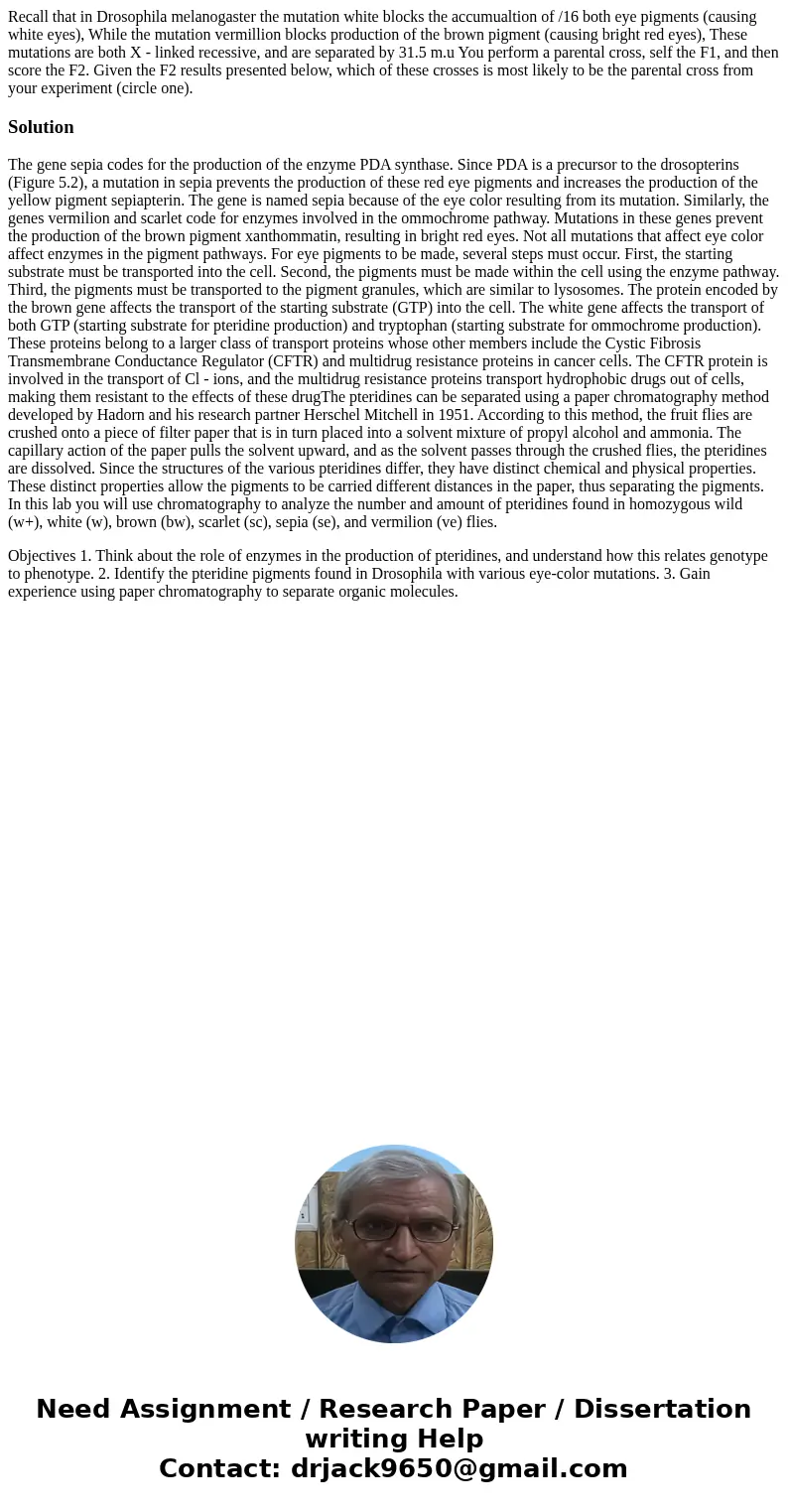Recall that in Drosophila melanogaster the mutation white bl
Solution
The gene sepia codes for the production of the enzyme PDA synthase. Since PDA is a precursor to the drosopterins (Figure 5.2), a mutation in sepia prevents the production of these red eye pigments and increases the production of the yellow pigment sepiapterin. The gene is named sepia because of the eye color resulting from its mutation. Similarly, the genes vermilion and scarlet code for enzymes involved in the ommochrome pathway. Mutations in these genes prevent the production of the brown pigment xanthommatin, resulting in bright red eyes. Not all mutations that affect eye color affect enzymes in the pigment pathways. For eye pigments to be made, several steps must occur. First, the starting substrate must be transported into the cell. Second, the pigments must be made within the cell using the enzyme pathway. Third, the pigments must be transported to the pigment granules, which are similar to lysosomes. The protein encoded by the brown gene affects the transport of the starting substrate (GTP) into the cell. The white gene affects the transport of both GTP (starting substrate for pteridine production) and tryptophan (starting substrate for ommochrome production). These proteins belong to a larger class of transport proteins whose other members include the Cystic Fibrosis Transmembrane Conductance Regulator (CFTR) and multidrug resistance proteins in cancer cells. The CFTR protein is involved in the transport of Cl - ions, and the multidrug resistance proteins transport hydrophobic drugs out of cells, making them resistant to the effects of these drugThe pteridines can be separated using a paper chromatography method developed by Hadorn and his research partner Herschel Mitchell in 1951. According to this method, the fruit flies are crushed onto a piece of filter paper that is in turn placed into a solvent mixture of propyl alcohol and ammonia. The capillary action of the paper pulls the solvent upward, and as the solvent passes through the crushed flies, the pteridines are dissolved. Since the structures of the various pteridines differ, they have distinct chemical and physical properties. These distinct properties allow the pigments to be carried different distances in the paper, thus separating the pigments. In this lab you will use chromatography to analyze the number and amount of pteridines found in homozygous wild (w+), white (w), brown (bw), scarlet (sc), sepia (se), and vermilion (ve) flies.
Objectives 1. Think about the role of enzymes in the production of pteridines, and understand how this relates genotype to phenotype. 2. Identify the pteridine pigments found in Drosophila with various eye-color mutations. 3. Gain experience using paper chromatography to separate organic molecules.

 Homework Sourse
Homework Sourse